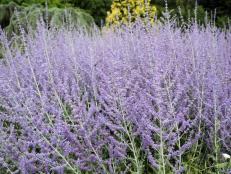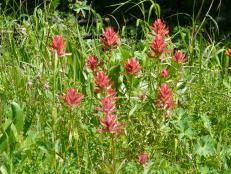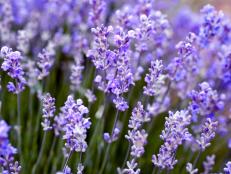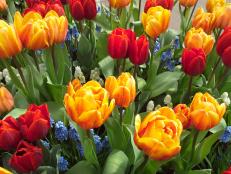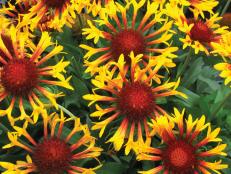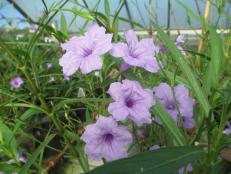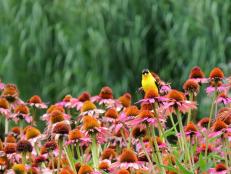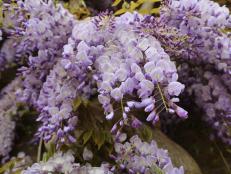Trailing Lantana: Lantana Montevidensis

Give your yard a dose of lavender with trailing lantana. The botanical name, Lantana montevidensis, hints at this plant’s origin. It was reportedly discovered in Montevideo, Uruguay, and is native to tropical areas in South America. It’s also known as purple lantana, a nod to the lavender blooms it opens all season long.
The flowers on trailing lantana appear as small round flower heads roughly 1 inch across. Each flower head is comprised of individual lavender blooms with yellow throats. They’re a favorite among butterflies and other pollinating insects. Purple lantana grows from 12 to 24 inches tall in the course of a growing season. The woody stems sprawl to 5 feet or more.
In the landscape, gardeners typically use Lantana montevidensis as a ground cover or atop retaining walls where stems can cascade freely. Count on trailing lantana to provide erosion control on slopes. The plants also work well in hanging baskets or large containers where their stems can spill over pot edges.
Purple lantana is heat- and drought-tolerant. It flowers strongest in full sun, but you’ll still see blooms in a partial shade location—just not as many. Give plants well-drained or even sandy soil. Plants are salt tolerant and a go-to choice for coastal landscapes. Because of its drought tolerance, purple lantana is also a great plant to include in xeriscapes.
Trailing lantana leaves release a strong odor when crushed that deer and rabbits find offensive. In areas where it’s hardy, purple lantana can play a key role in a deer-resistant landscape. Use it to skirt roses, hydrangea or other deer favorites to try and give deer the brush-off.
Lantana montevidensis is winter hardy in Zones 9 and 10. In Zone 8, plants are root hardy. Temperatures in the mid-20s or lower kill plants to the ground, but roots remain alive and resprout in spring. A thick mulch at the base of trailing lantana plants can help them overwinter in Zone 8 and occasionally in Zone 7b during mild winters.
In other areas, treat trailing lantana as an annual. In cold-winter regions, gardeners sometimes overwinter potted purple lantana indoors or take cuttings to root and grow through winter. Typically plant prices are low enough that many homeowners simply purchase new plants each year.
In areas where purple lantana is killed to the ground in winter, plants typically start flowering in midsummer and continue until frost. In areas where it actively grows year-round, you’ll see non-stop flowers on plants.
Lantana montevidensis is not as invasive as its cousin, Lantana camara, but it has escaped gardens and naturalized in frost-free areas, including California, Florida and along the Gulf Coast. If consumed, trailing lantana leaves do cause pets and livestock to become ill. Lantana montevidensis forms berried fruits that, when unripe, are quite toxic.







